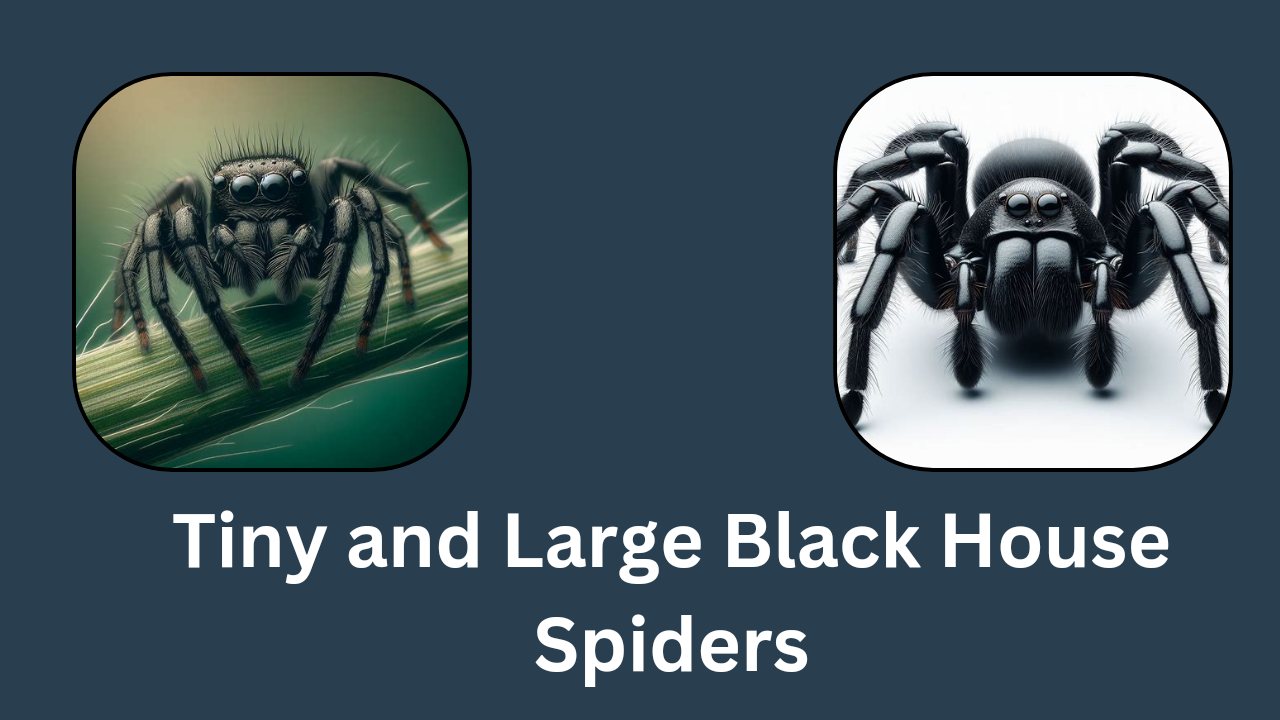
1, Jan 2024
Tiny and Large Black House Spiders
Even though they are sometimes ignored black house spiders are intriguing members of our ecosystems. These spiders are fascinating to study, from the tiny ones that secretly build elaborate webs within to their larger colleagues that create magnificent outdoor works of art. In this article, we explore the traits, habits, and cohabitation techniques of both small and giant black house spiders.
Identification and Characteristics:
Tiny Black House Spiders
These spiders, which are only a few millimeters in size, are well-known for their stealthy appearance. They disappear into nooks and crannies because of their dark color. Their intricate, yet effective, webs make the ideal trap for naive victims.
Large Black House Spiders
In contrast, their larger counterparts boast a more noticeable size, often spanning several inches. Their intricate webs, which sprawl across outdoor areas, resemble works of art. Their varied coloring, which includes tones of brown and black, helps them blend in with their natural environment.
Habitat and Distribution:
Tiny Black House Spiders
Indoors, these spiders favor cozy corners, closets, and basements. Outdoors, they may seek refuge in plants or under rocks. Adaptable to various climates, their distribution is widespread.
Large Black House Spiders
Outdoor environments, such as gardens, sheds, and porches, are the preferred domains for larger black house spiders. Factors like climate, and vegetation influence their distribution and the presence of suitable prey.
Behavior and Diet:
Hunting and Feeding Habits of Tiny Black House Spiders
These are expert hunters that use their web to snare tiny insects. They mostly eat other small arthropods like flies and mosquitoes.
Hunting and Feeding Habits of Large Black House Spiders
Larger spiders exhibit more diverse hunting strategies. They may actively hunt insects, using their size and speed to their advantage. Their diet includes a broader range of prey, contributing to ecosystem balance.
Interactions with Other Species
Both tiny and large black house spiders interact with a variety of insects. Some species may engage in territorial disputes or share spaces harmoniously, depending on their ecological niche.
Venom and Potential Harm:
Overview of Venomous Characteristics
Although they have venom, black house spiders are not thought to be extremely poisonous to humans. The main purpose of the venom is to paralyze prey, and unless provoked, spiders do not bite.
Potential Harm to Humans and Pets
Black house spider bites are usually not too painful and hardly cause serious side effects. Cleaning up the bite site and keeping an eye out for any strange symptoms are appropriate first aid procedures. On the other hand, allergic reactions can happen and call for medical intervention.
First Aid and Precautions
Cleaning the bite area with soap and water is one of the basic first aid techniques. Using a cold compress can aid in reducing edema and pain. It is advised to consult a doctor if symptoms intensify or continue.
Coexistence and Pest Control:
Importance of Understanding Ecological Role
Black house spiders feed on insects that are deemed nuisances, which helps greatly with pest control. Acknowledging their ecological function promotes a more impartial viewpoint toward their existence.
Tips for Coexisting
To live in harmony with these arachnids, keep your home clutter-free, plug any gaps or holes that could allow them access, and clean frequently. Keeping a diverse plant life and an ecosystem in balance outside promotes the existence of helpful insects.
Non-Lethal Pest Control Methods
If you’re afraid of spiders, you can control insect populations without hurting the spiders by using natural repellents or traps, which are non-lethal pest control approaches.
Common Misconceptions:
Dispelling Myths
Myths and misconceptions about black house spiders can give rise to unjustified anxieties. Clearing up these misunderstandings helps people have a more sensible and educated opinion of these helpful arachnids.
Clarifying Their Role in Ecosystems
Being aware of the essential function black house spiders play in preserving natural balance fosters a more grateful attitude. They help create a better environment by managing the population of insects.
Conclusion:
In the intricate world of black house spiders, the tiny and large species bring their unique charm and significance. An improved relationship with these intriguing spiders might result from identifying their traits, comprehending their habits, and adopting living techniques. We have a greater understanding of their significance in the complex fabric of nature as we work through the mysteries surrounding their life.
- 4
- By Faizan Khan






